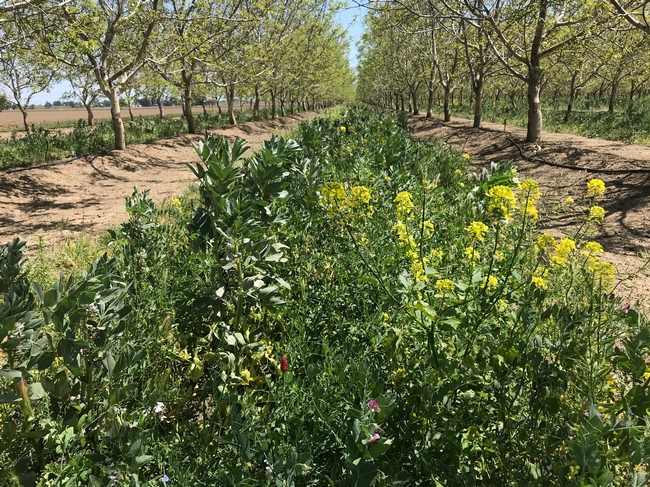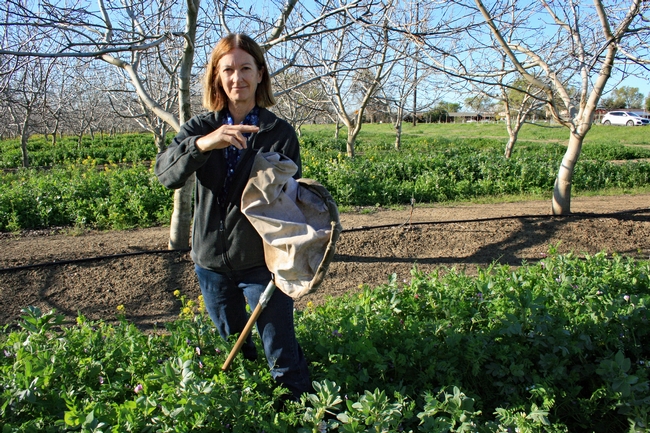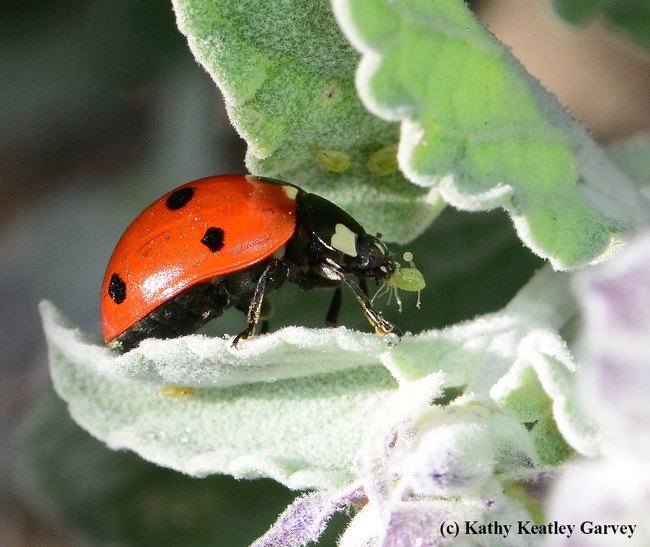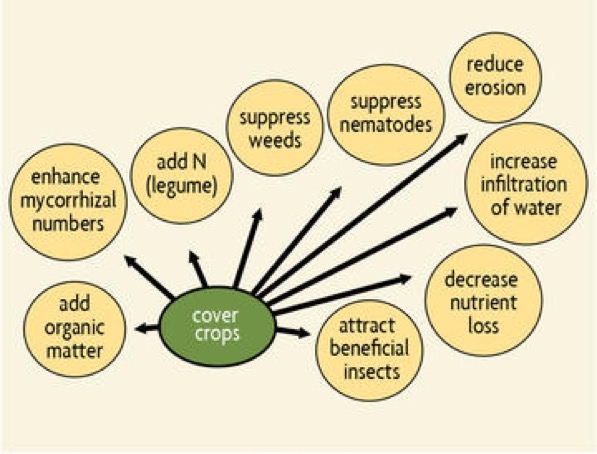Posts Tagged: beneficial insects
The Red Coats Are Coming
The Red Coats are coming. The Red Coats are coming. No, not an army of soldiers. Soldier beetles. These insects (family Cantharida) resemble the...
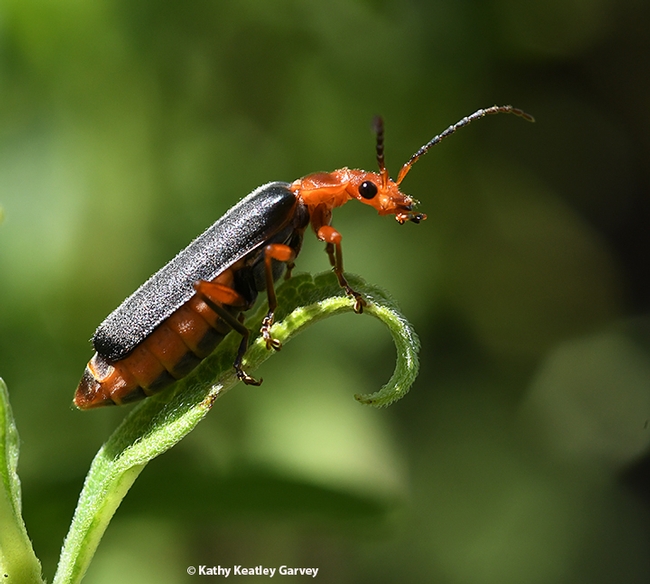
A soldier beetle (family Cantharida) looks out over a milkweed in search of more aphids. (Photo by Kathy Keatley Garvey)
Bugging You at the California State Fair
The Insect Pavilion at the California State Fair, which includes specimens from the Bohart Museum of Entomology at the University of California,...
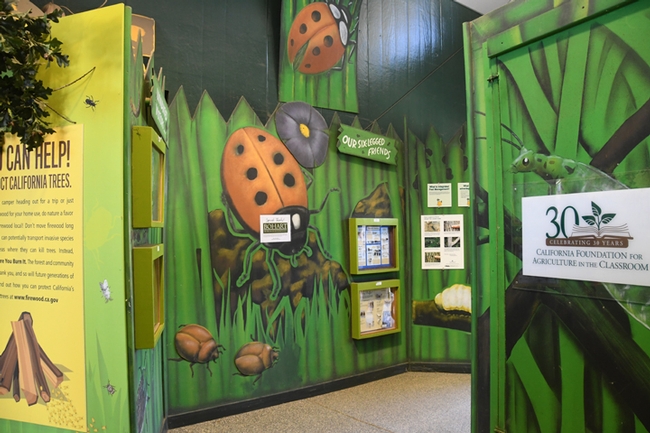
The California State Fair's Insect Pavilion lauded the Bohart Museum of Entomology for donating insect specimens. (Photo by Kathy Keatley Garvey)
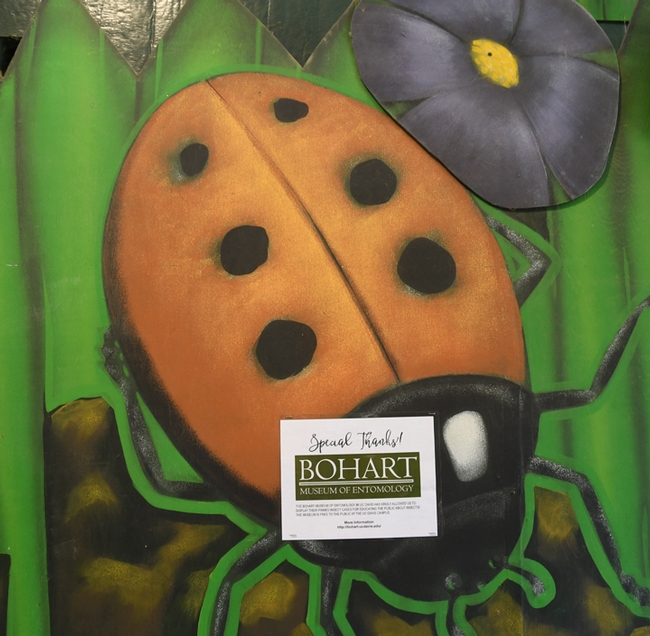
Everyone liked the beneficial insect, the lady beetle, aka lady bug. (Photo by Kathy Keatley Garvey)
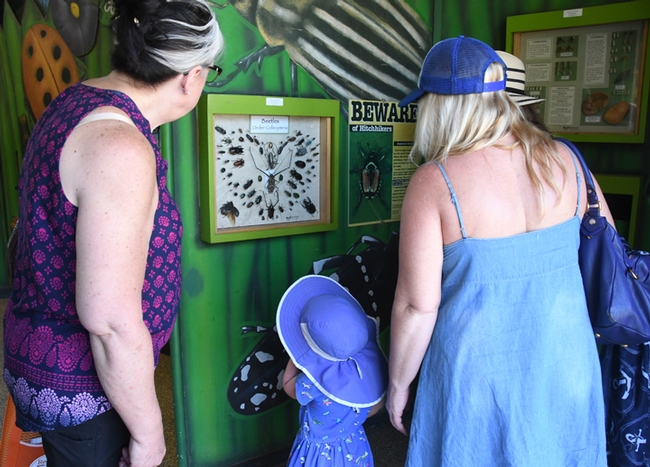
This trio checks out the pests displayed below a sign in the Insect Pavilion that cautions: "Beware of hitchhikers." (Photo by Kathy Keatley Garvey)
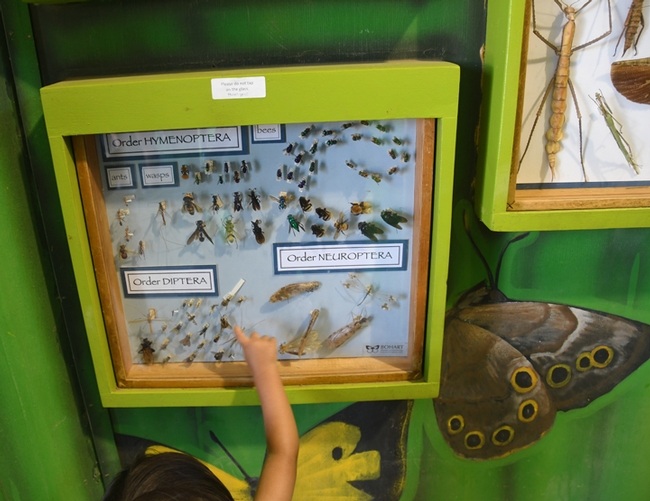
A youngster points excitedly at a display in the Insect Pavilion. (Photo by Kathy Keatley Garvey)
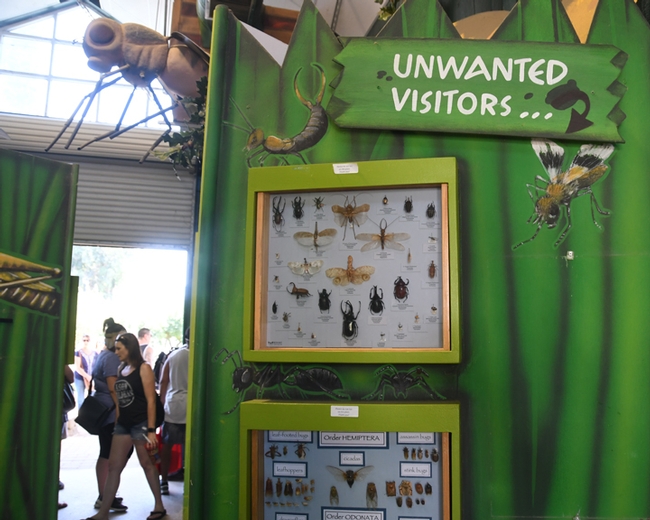
The wanted visitors at the California State Fair and the unwanted visitors (pests). (Photo by Kathy Keatley Garvey)
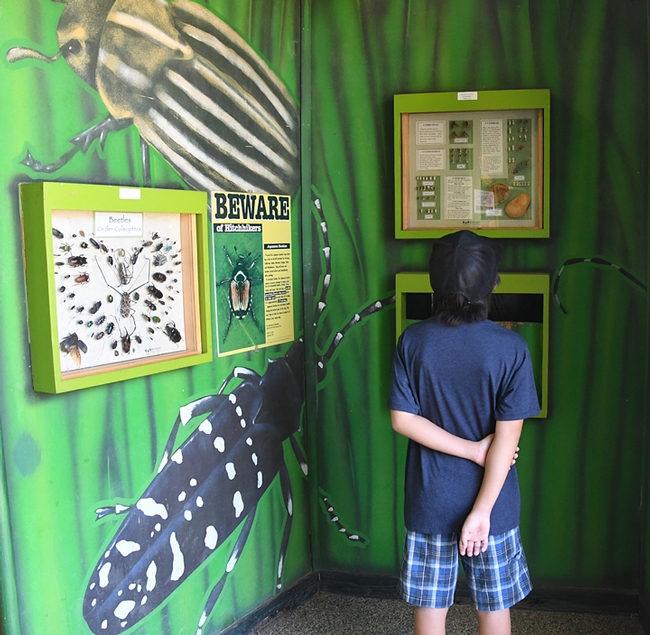
This visitor was fascinated by the displays in the Insect Pavilion. (Photo by Kathy Keatley Garvey)
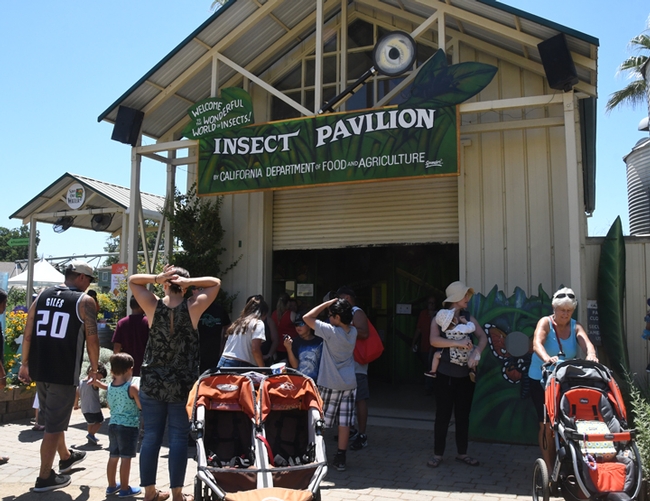
Visitors coming and going in the California State Fair's Insect Pavilion. (Photo by Kathy Keatley Garvey)
Grow cover crops to attract beneficial insects, add nutrients, suppress weeds and build soil
George Washington, the father of our country, said it well when he proclaimed he grew “crops to eat and sell” and “crops to replenish the soil.”
Generations of farmers follow his footsteps.
Cover crops (also known as green manures) are plants primarily grown for the benefit of the soil rather than for crop yield. With autumn only a few months away, now's a good time to think about planting cool-season cover crop seed mixes for your farm or garden.
Why grow cover crops?
The benefits of cover cropping include reduced soil erosion, adding organic matter, nutrients, and mycorrhizae to the soil, and weed and nematode suppression. Cover crops also increase nutrient retention and water infiltration. And some, such as radish, break into compacted soil layers, making it easier for the following crop's roots to develop more fully. Flowering cover crops on farms also increase beneficial insects, including bees and natural enemies, that provide pollination and pest control services in crop production.
How do cover crops benefit natural enemies?
Beneficial insects need nectar and pollen to survive and reproduce. For example, adult parasitoid wasps feed on flowers, while the parasitoid larvae prey on pests such as aphids, caterpillars, and stink bugs. Lady beetle, aka ladybugs, feed on flowers, especially during times of prey scarcity. In addition to flowers, cover crops, such as vetch and bell (fava) beans, have extra-floral nectaries or spurs at the base of the leaves. These secrete a sugary syrup that attracts beneficial insects, such as syrphid flies to control aphids.
Insectary cover crop seed mixes.
Winter mixes that attract beneficial insects (aka Insectary Plants) and fix nitrogen include bell beans, clovers, field peas, and vetch. Other insectary plants to add to a cover crop mix include forbs such as baby blue eyes, poppies, phacelia, purple Chinese houses, sweet alyssum, and tidy tips. Small grains (triticale, barley, and rye) are good pollen sources for beneficial insects. It's a good idea to order insectary cover crop mixes from local sources to avoid potential introduction of non-native forb-type plants from other areas.
Cover crops to perhaps avoid in some crop rotations.
Avoid cover crop species that host arthropod pests or plant pathogens that can damage nearby crops. For example, bell beans are a key host for tomato spotted wilt virus vectored by thrips insects, UC IPM. Mustards attract beneficial insects, but are significant hosts for pests such as stink bugs, cucumber beetles, flea beetles, and lygus bugs. Alfalfa has extra-floral nectaries, but is not a recommended insectary plant because it hosts pathogens, including alfalfa mosaic virus that infects a number of crops, including tomatoes (UC IPM).
How important are floral resources for natural enemies?
In a 1998 research article, Beneficial insects move from flowering plants to nearby crops, published in California Agriculture journal, I pointed out that beneficial insects extensively use flowering cover crops. In a mark-and-recapture study in an almond orchard with a cover crop, 80 percent of the syrphid flies and 40 percent of the lacewings (both aphid feeders) trapped in the trees fed on flowers and extra-floral resources that the insectary plants provided, as did 10 percent of the parasitoid wasps, which prey on peach twig borer.
Balancing multiple needs of cover crops.
Note that legumes need to be mowed or disked prior to full bloom for maximum nitrogen fixation, limiting floral resources. To favor beneficial insects, don't mow or disk all of your cover crop at once; instead, leave occasional strips of flowering plants on your farm. Beneficial insects will find the flowers, as they move around (at least 600 feet for many natural enemies and over a mile for bees). If frost is a concern in your orchard, consider planting strips of low-growing insectary plants, such as tidy tips and other forbs listed above. Be sure to select seed mixes that work with surrounding crops.
George Washington used cover crops to replenish the soil; they're also good for the soul when you savor the benefits, especially all the flowers and beneficial insects attracted to them. Why not play a game of “I Spy” in your cover crop and see if you can find a bumble bee or one of the myriad of natural enemies featured in the UC IPM poster, Meet the Beneficials.
Additional reading
Flowering cover crops support wild bees and a regional sustainability agenda, part of the June 2018 research update in California Agriculture journal.
UC ANR publications on cover crops:
Cover crops for California Agriculture
Cover Cropping for Vegetable Production
Cover Cropping and Conservation Tillage in California Processing Tomatoes
Cowpea Production: Sample Costs and Benefits as a Summer Cover Crop
Cover Cropping in Vineyards: A Grower's Handbook
Cover Crops for Walnut Orchards
Growing Great Roses Without Toxics
The rose (Rosa) has an undeserved reputation of requiring a lot, in terms of time, chemicals, and trouble. But it doesn’t have to be that way. Here are a few tips to keep in mind if you are considering adding a rose garden, or even a handful of favorites to your existing garden.
Select for disease resistance
Find a variety that has a track record for resisting the “big three”: black spot, rust, and powdery mildew. Here, the AARS can be helpful. The All-America Rose Selections is a non-profit, which will list the top performers in 15 categories, including overall beauty, ease of maintenance, and the ability to resist disease.
Log on to rose.org/winning-roses/ and select “N. CA & Northwest”. Also, when you buy roses, go for Grade 1, which are usually found in nurseries, rather than the discount stores. This means that they must have three or more strong canes, well spaced around the graft. Also, don’t be afraid to do what is known as “shovel pruning”, meaning if a rose does not perform well in your particular area after one season, consider replacing it with something more reliable. One trick is to go for the glossy leafed varieties if you are buying during the growing season. The glossy leaves seem to repel most fungal infections.
Use beneficial insects
The most commonly known beneficial insect is the Lady beetle, which feed on aphids in both the adult and larval stages. But some of the lesser-known beneficial insects are also important, like the Leatherwing or soldier beetle, Syrphid flies, which are important predators of aphids, and predaceous mites. Thrips are a mixed bag, feeding on both plants and spider mites. And don’t forget that all spiders are predators, and are important in your garden. You can see them all in UC ANR’s Healthy Roses (publication #21589). Before reading this, I had been hand picking off Leatherwings, thinking they were harmful!
Use good cultural practices
First and foremost is the need for nutritious soil that’s fertilized on a regular basis and mulched, at least 6 hours sunshine minimum, and enough water. If you use drippers, roses can also benefit from weekly deep watering, and overhead sprayed water from the shower setting on a hose to keep the leaves free of aphids and mites, or even fungal spores, so long as the leaves are dry by sunset. Provide good air circulation by spacing roses at least 3’ apart, and trim out some of the bottom inside leaves for the same reason. Annual pruning will remove any damaged or diseased canes, as well as dead wood. At pruning time, all leaves should be stripped from the plant, so you can see what you’re doing, and cut out all unnecessary growth. If you are going for show quality roses, cut the canes down to 12-18”, which forces lush new growth in spring. The attached photos are some of my favorite blooms for cutting,Rosa floribunda ‘Hot Cocoa’, and R. ‘Brandy’, both grown without any toxics.

'Hot Cocoa' photos by Bud Veliquette

'Brandy'
What Do You Want for Your Birthday?
Several women I know asked for jewelry, cruises or trips to Las Vegas; but I asked for raised beds. Walking around the backyard I picked out a good spot -- taking in consideration the hours of sunlight -- my husband and I visited the various box stores in the area. Redwood was chosen because of its ability to last longer. Our measurements were six feet long, four feet wide and 22 inches high. The height was important to both of us because we are in our seventies and don't bend and stretch as easily as we used to.
We lined the box sides using staples to keep the soil from leaking out between the planks. After doing the math we ordered three yards of special soil mixed especially for raised beds. In addition, I incorporated four bags of dried chicken manure from a local organic chicken farm.
We enjoyed a bounty of vegetables, greens and herbs and I was amazed at how well plants grew in a raised bed. I found it very interesting that beneficial insects easily found the plants growing in a high rise environment, but the troublesome pests appear to have a more difficult time finding the plants. Very few problems.
The first raised bed we built provided us with strawberries throughout the season. I am still able to go out in the morning every couple of days and find a few small and delicious berries. I am now thinking of changing bed # 1 as a herb garden instead of having the herbs spread all over the yard.
How lucky I am to have a husband who indulges my 'crazy birthday ideas' -- that end up benefiting the both of us!

The beginning of the raised bed. (photos by Danielle Wilkowski)

Vegetables spilling out of the raised bed.

Yum! Strawberries!


